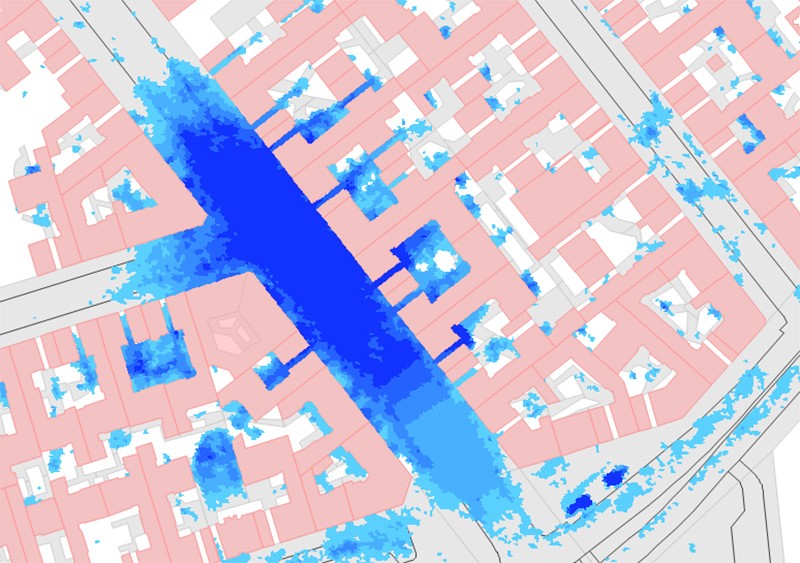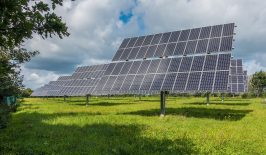Climate change has become more and more noticeable in the past few decades. Reports of long periods of heat and drought, as well as unusually heavy rainfall, are becoming more frequent. It is common for regions to receive precipitation levels that are either well below or above average, making traditional rainwater management difficult.
FACTS: EXTREME WEATHER CONDITIONS IN GERMANY
According to ZDF, the northeast of Germany, particularly around Berlin, Cottbus and Magdeburg, have the least rainfall, with generally under two litres of precipitation per square metre.
Days with temperatures above 30 degrees Celsius have increased from 3.6 days between 1961 and 1990 to 8.1 days in the last 30 years.
The consequences of these changes are increased droughts and forest fires.
In southern Germany, particularly in the region around Hagen, the number of days with over 20 litres of precipitation per square metre has increased significantly over the last 30 years, currently standing at 4.9 days.
Climate experts predict that extreme weather events in Germany will occur more frequently and become even more extreme in the coming years. Excessive building and agricultural density, as well as exceptionally wet or dry soil additionally disrupt the absorption and storage of precipitation by the earth. In contrast, forests seem to be particularly resistant to climate change. If you look at the balanced water budget of a forest, large trees in particular act as natural air conditioners through evaporation via their leaves. But, is it possible to move our cities closer to our forests in terms of environmental resilience?
AMAREX — Adapting the management of stormwater to extreme events
The AMAREX project is investigating ways of adapting stormwater management to the increasing extreme stresses caused by climate change and thus serves climate impact adaptation. It can be subdivided into different interacting areas. Its ideas are being investigated and applied in the cities of Berlin and Cologne. The project is scheduled to run for three years after starting in February 2022.
Both drought and heavy rainfall prevention need to focus on expanding the functions of existing rainwater management. This means how rainwater is handled in urban areas. When done well, it promotes groundwater recharge as well as reducing heat in the city through evaporative cooling.
The aim of AMAREX is to adapt the preexisting rainwater management measures to whatever changes are occurring to a region’s climate. These additional measures should be as natural as possible — such as promoting more urban greenery and creating more ponds and canals. The AMAREX project is already underway in pilot areas.
The project’s GIS geoinformation system aids drought prevention by collecting geodata for digital terrain models and area information. The geodata is supplemented by climate data on temperature and precipitation. The aim here is to analyse the potential of rainwater for the irrigation of urban green spaces. Models will be used to calculate the city or region’s storage, treatment and provision capacity. In cooperation with project partner HELIX, the irrigation of green facades with stored rainwater and plant growth will be investigated using a detailed database.
The area of heavy rainfall prevention also works with the GIS geoinformation system. In this way, potential flooding areas can be identified. The simulation software InfoWorks ICM is used to create a hydraulic flood model and comparative model simulations. Often, solutions such as naturally constructed infiltration ponds can absorb an excess of rain and slowly release it into the surrounding area.
In the area of reduction and climate impacts, a web-based tool for mapping the effects of rainwater management on climate impacts in urban areas is being developed based on the water balance model ABIMO 3.2. This is intended to support urban strategy regarding the climate.
AMAREX’s prospects are far-reaching
Although the IPCC’s World Climate Report reminds us every year how serious the climate crisis situation is all over the world, there is still some room for change. In addition to serious intentions in the reduction of greenhouse gases such as carbon dioxide, we can prepare our cities and municipalities for climate change in the best possible way.
Ideally, this is done through projects like AMAREX, in which science, municipalities and companies work together and jointly develop differentiated and successful solutions for pilot areas. The measures and tools already tested can then be transferred to other, similar regions on a large scale in the next step.
“The importance of functioning and, above all, well-adapted stormwater management will increase as the consequences of climate change become more and more noticeable and should be an integral part of planning processes in the future. The solutions developed for this should be easy for municipalities to apply,” explains Matthieu Rigal from the project partner Technologie Stiftung Berlin.
The prospects of the pilot project are positive, as “similar projects on climate impacts have already shown that there is great potential for solutions in decentralised rainwater management, for example through green measures, such as green roofs or façades, and blue measures, such as ponds and canals,” says Dr. Andreas Matzinger from the project partner Kompetenzzentrum Wasser Berlin (KWB).
Since our cities will have to become more climate resilient in the future, it is worth comparing the urban water balance with the balanced water balance in a forest. Dr. Andreas Matzinger says: “The starting point is the observation that the rain that falls in the city largely runs off via the drains, and in return lacks the water for percolation and, above all, evaporation of a forest or meadow. This shift in the local water balance in sealed cities is responsible for the negative climate impacts that occur there.”
If we take the water balance of a forest as a model and derive solutions for sustainable rainwater management in our cities from it, many of the negative climate impacts can be reduced, at least in part — this is the hypothesis of AMAREX. The future will show whether we can take inspiration from the natural world into our cities, and whether this could hold the key to living in harmony with our natural world.










